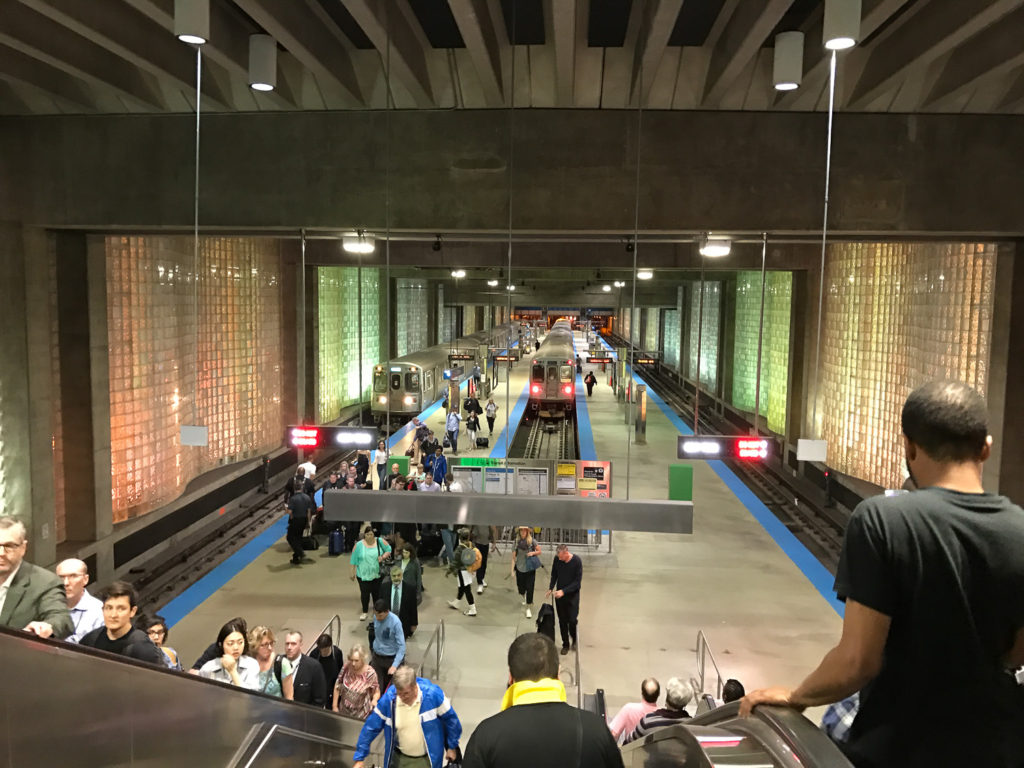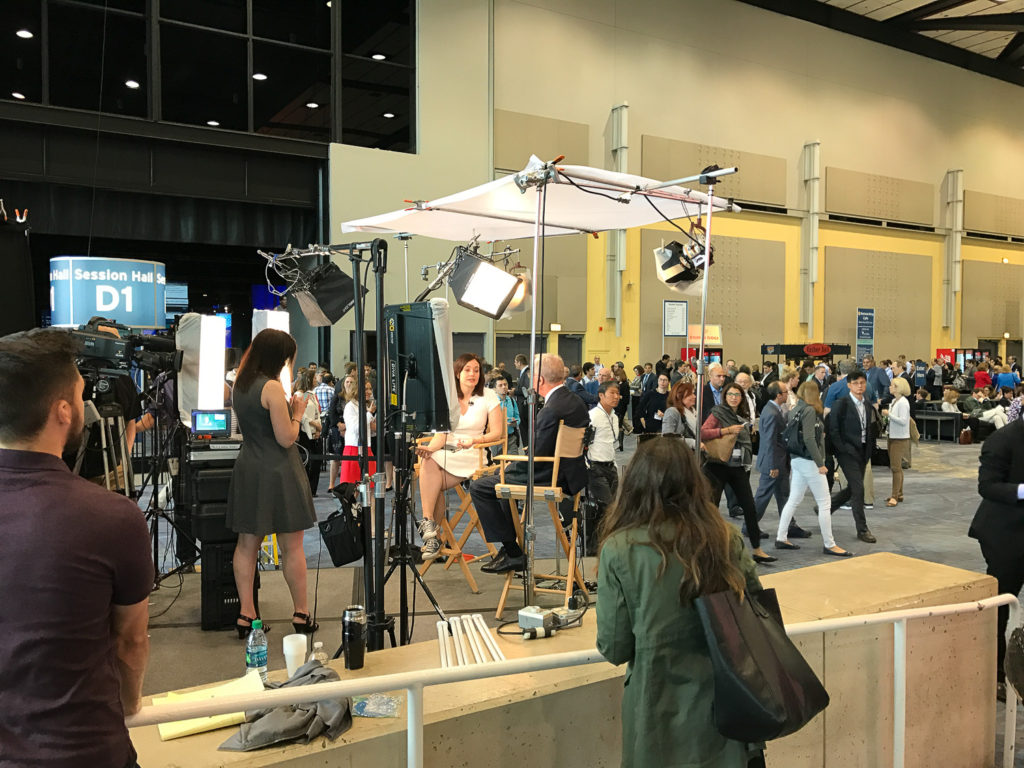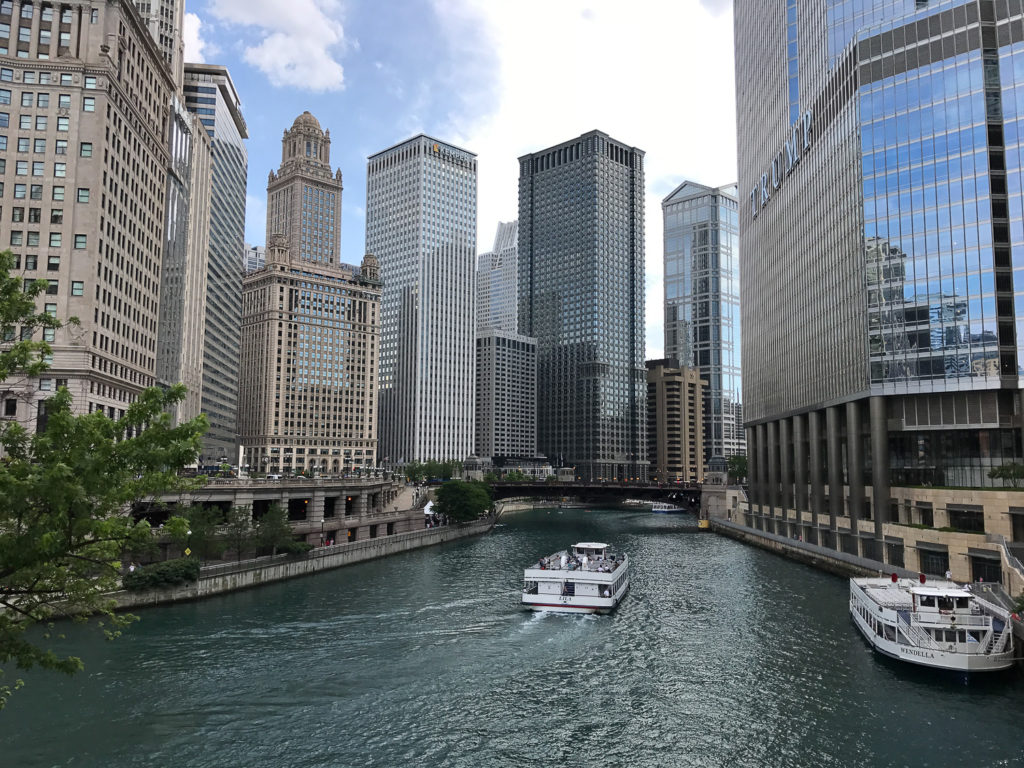ASCO 2017
This is a trip report about the American Society of Clinical Oncology conference. ASCO takes place every year at the McCormick Place in Chicago, Illinois. It brings together over 30,000 doctors, scientists, and industry representatives from the field of Oncology.

Pre-Trip preparation
- Sign up for the ASCO Conference: $930 USD.
- Find a hotel, preferably downtown. There are free shuttle buses that run throughout the city.
- Plan your conference experience using the ASCO app and analyst session planners (ie Leerink). These are two free websites that are popular:
- Sign up for the free parties around the city. Ask your coworkers, they’ll know.
- Make restaurant reservations (Girl and the Goat, Alinea, etc)

Day 1
FLIGHT: SFO to ORD
Flights into and out of Chicago O’Hare ORD airport are notorious for delays, so plan accordingly. I arrived in Chicago after a 2 hour delay, and walked inside the airport to the Metro station. A one way ticket to Chicago on the Blue Line is $5 USD (only $2.50 on the return trip!). The train ride took about 45 minutes from the airport to the end of the line in downtown Chicago (Washington Station). I enjoyed the ride, vs sitting in rush hour traffic in a taxi. My entire commute was spent catching up on pharma analyst news and planning for ASCO.
After a quick dinner with some colleagues, we hit a roof top party at the Godfrey Hotel, sponsored by a vendor. Checked in at the Intercontinental Hotel on the Magnificent Mile.


Day 2
The best way to start your day at ASCO is with a nice coffee from Intelligentsia and a buttermilk old fashioned donut from Do-Rite donuts. Yum.


Then find a shuttle bus and make your way to ASCO. I hope you have your ASCO planner handy because it’s a bit hard to navigate the McCormick center. My first session was a bust because I got lost, and sat in the wrong room.


Food is terrible at the center, so avoid if at all possible. If you must, there is a McDonald’s, Connie’s Deep Dish pizza, a Starbucks, and a bunch of food carts slinging barely edible hotdogs. There are no restaurants walking distance from the center. I tried not to eat at the conference center, and went for a light snack at Eately, before a full on department dinner. Hmm, am I focused in on the food vs the conference? Let’s switch that up.
Day 3
Today, I attended more sessions and roamed around the company booths. It’s quite interesting to check out the different booths, and view each company’s R&D pipeline. I don’t usually have a need to talk to the people at the booths as they are usually regional sales folk, medical affairs, or hired contractors. On a side note, companies don’t give away any free gear anymore because of different regulatory laws, but most have coffee stations with baristas. Some even have freshly baked pastries, ice cream, or crepes. Oops, more food talk.





Anyway, after a long day, I pigged out at the Purple Pig and attended a nice late night company event.
Day 4
More interesting sessions, especially the APHINITY read out. CNBC was camped out next to Hall D1, so I was able to watch Meg Terrill in action, speaking to Merck’s Roger Perlmutter. Where was Caroline Chen and John Carroll?

What are my ASCO 2017 take aways?
- Merck is currently the leader in Checkpoint Inhibitors after dethroning last year’s king, BMS. They are combining their PD-1 Inhibitor, Pembrolizumab (marketed name Keytruda), with every molecule imaginable.
- The most talked about combo was Pembrolizumab + Epacadostat (IDO1 inhibitor from Incyte). Interesting, because at the Keystone Symposia back in March 2017, researchers were only talking about Pembrolizumab + Ipilimumab (anti-CTLA-4 antibody).
- In an interesting turn of events after ASCO, Roche decided to drop their partnership with Newlink and returned their IDO1 inhibitor.
- New comers to the checkpoint inhibitor race, Regeneron and Sanofi are trying to take the #3 spot behind Merck and BMS, in the immuno oncology space. Their PD-1 drug, REGN2810 is for Cutaneous Squamous Cell Carcinoma. Their claim, PD-1 is a better pathway than PD-L1?!

- Unknown LOXO Therapeutics with their breakthrough therapy, Larotrectinib demonstrating 76% Objective Response Rate in TRK Fusion Adult and Pediatric Cancers
- Another unknown from China, Nanjing Legend, showed their eye popping BCMA CAR-T data. 94% of multiple myeloma patients who relapsed, experienced clinical remission.
- Roche Genentech unveiled an additional 3 years of data for their APHINITY trial (Perjeta + Herceptin vs Herceptin (monotherapy)).
- Other interesting molecules to track: CEA TCB bispecific antibody, CSF1R, GITR, LAG3, TGFbeta, ICOS, A2A,
- Did I mention the poster sessions? Basically there is a poster area where you can read abstracts from different companies. The most interesting abstracts are chosen for the Oral abstract talks. Stick with the Hall D1 or D2.

In summary, check out Lou Malnati’s deep dish pizza and take the architecture tour before you leave Chicago.

